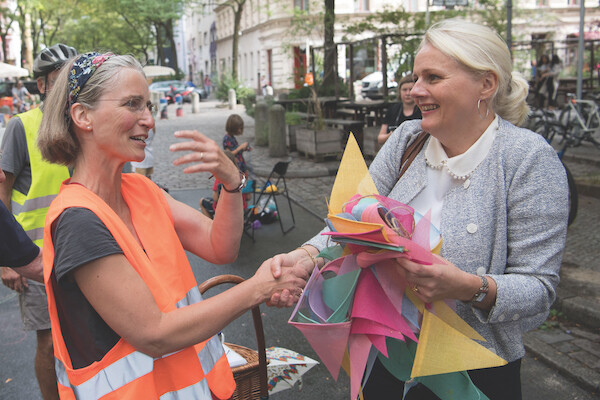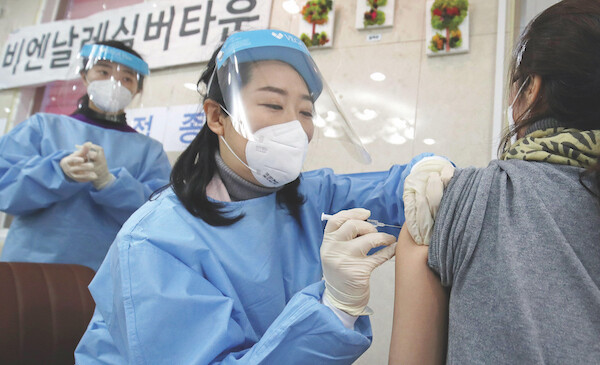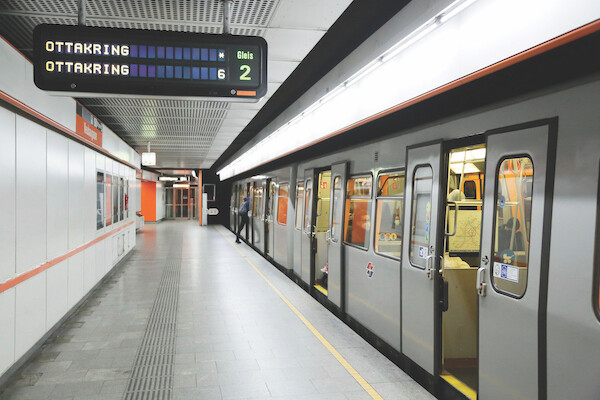An interesting, if obvious, lesson from the pandemic is that viruses aren’t very respectful. They don’t respect status, as over a dozen world leaders have discovered; they don’t respect time, as critics of former US president Donald Trump anxiously cautioned during his three-month presidential transition; and they don’t respect borders. To Covid-19, there’s no Switzerland or Hong Kong, Mexico or Nepal. There’s no Europe or Asia or, for that matter, western or eastern hemispheres. There are just hosts, human or otherwise (according to a study in Science, cats and ferrets are “highly susceptible” to the disease).
And yet borders are useful in a pandemic because they provide a framework to determine what’s effective. Each country is like a separate laboratory, with some producing undeniably good results (New Zealand, Singapore), some tragic failures (the US, Brazil), and the majority something in between.
While success seems to hinge on the same fundamentals – like how early a government intervenes, how strict its lockdown measures are – it’s in the details that we find policy inspiration: what are the specifics that countries do that help contribute to success, and that others can learn from?
The five examples below were selected from among hundreds that have been applauded the world over for their ingenuity. Readers who want to learn about others can find catalogues of innovative responses to Covid on the websites for global institutions like the UN and OECD. Oxford’s Blavatnik’s School of Government also has an online tool that allows users to track and compare policy responses from around the world.
Germany Level playing field
Like most who have endured long lockdowns, Berliners have felt that their home has lost much its character. As one blogger put it, “the sounds of chatting in restaurants, glasses touching the tables in bars and pubs, music from clubs, and broken bottles in front of Spätis [late-night convenience stores] were transformed into a silence no one could relate to”.

Counted among those once familiar sounds is that of children playing, which was effectively muted by the government’s temporary ban on outdoor group exercise. As a direct result, playgrounds across Berlin were taped off and children restricted to indoor activity.
With few green spaces for youngsters to play in, the artsy borough of Friedrichshain-Kreuzberg was especially affected. Luckily, the district office had a clever workaround: it opened 30 streets on Sundays for the creation of temporary playgrounds, managed by residents to ensure compliance with social distancing.
It’s a textbook example of what some are calling “tactical urbanism”: low-cost interventions that achieve long-term outcomes (other examples include miniature libraries and “seed-bombing” neglected patches of soil). Hopefully the outcome won’t stretch too far into long-term, however, so the kinder of Friedrichshain-Kreuzberg, one of Europe’s most densely populated urban areas, can return to their usual play.
India Corona, meet CARUNA
Talk about cross-departmental collaboration. In April 2020, officials spanning different braches of 22 of India’s civil services joined forces to create the Civil Services Association Reach to Support National Disasters (CARUNA), an initiative that pools data on migration, essential supplies, and PPE to assist district-level efforts to tackle Covid.

Launched on the heels of the world’s largest lockdown, CARUNA has already helped field operatives with training, facilitated delivery of PPE, and even set up temporary shelter for frontline workers. It has also assigned officers to support prime minister Narendra Modi’s “11 empowered groups”, which are teams led by senior representative from the prime minister’s office and the cabinet secretariat that focus on specific areas of the pandemic response (such as medical equipment and human resources).
“We are here to assist, support and supplement the government efforts with regard to coronavirus using our networks, skills and resources,” Indian Administrative Service vice president Sanjeev Chopra, who launched CARUNA, told newspaper ThePrint. “Since civil servants are spread out across the country, this network can be used to create a database of information.”
India has so far had 154,000 deaths from COVID, which is third highest in the world behind the USA and Brazil.
South Korea Drive-through open
What’s fuelling Korea’s coronavirus success? What’s South Korea’s secret to keeping Covid deaths down to 1,496? Headlines pose these questions daily, and yet there’s no code to crack. The answer lies in an effective three-pillared approach: expansive tracing, zero-tolerance isolation of the most severe cases, and fast and free testing. While the tracing and mandatory isolation measures have been impressive, it’s the testing that has garnered the most media attention. And for good reason: by early March 2020, South Korea had already tested 145,000 people, which by then was more than the UK, US, France, Italy, and Japan combined.
One way South Korea achieved such remarkable results was by pioneering the walk-in booth, piloted in early March 2020 and quickly scaled up to include hundreds of locations across the country. The booths, which effectively increased the number of people being tested tenfold, immediately relieved hospital capacity and were hailed as a success not only by Koreans but also by other countries looking to follow suit.
Not everyone had easy access to these booths, however, so Jaemyung Lee, the governor of Gyeonggi province, came up with the idea of drive-throughs. They first emerged in the city of Goyang, at the city hall car park. Drivers were registered, checked for symptoms, and swabbed before their car was thoroughly disinfected – all in about ten minutes. Three days later they received their results via text message.
Officials experimented with different iterations of the drive-through. Some sites were container-based, where drivers would pull up to a registration container followed by a health-check container and so on.

The containers took up a lot of space, however, and required drivers to leave their vehicles, so a more efficient alternative developed that used a single open medical tent where doctors could easily swab drivers through their window. The biggest advantage of the tents was their cost: one tent costs up to fifty times less than a set of containers. Unsurprisingly, most drive-throughs currently operated by local governments employ the tent model.
These early developments in South Korea led to the development of drive-through testing centres in many countries around the globe, but not every country has been able to mimic this success. As one study highlights, South Korea’s highly connected population and thriving software industry make it especially well positioned to deploy mobile apps, making the execution of such large-scale programmes seamless.
Pakistan All aboard
Travel has been one of the most conspicuous casualties of the pandemic, so much so that global carbon emissions fell by a peak of 17% in April last year. While many cheered this news, scientists cautioned that carbon concentrations are still high, and that a deadly virus is by no means a sustainable solution to a warming planet.
But that doesn’t mean all those unused vehicles can’t be put to use, which is exactly what Pakistan’s railway officials were thinking when their trains screeched to a halt. As soon as travel was suspended, state-owned Pakistan Railways immediately got to work converting air-conditioned sleeper and business class train carriages into Covid wards, each with a capacity of about 36 patients. The best part about these retrofitted wards, besides the fact that they took in thousands of patients, was their mobility. They could easily be sent to any part of the country with rail access so that local areas in dire need of help could have a small hospital on their doorstep within hours. In cases of emergency, patients could be swiftly shuttled to the nearest hospital.
The first train ward was established in Rawalpindi, just a few kilometres outside Islamabad. Shortly after that Lahore, Karachi, Peshawar, Shakkar, Quetta, and Multan followed suit. Other countries like China, India, and Indonesia also implemented similar programmes, examples of what observers call “frugal innovation”: creative efforts to do more with less despite institutional voids and resource constraints. Distilleries using their machinery to churn out hand sanitiser is another example, as well as sports stadiums used as temporary hospitals.
Pakistan begun its vaccination campaign on 3 February, administering the first of half a million doses of China’s Sinopharm vaccine. The World Health Organisation’s COVAX programme, which aims to provide equitable global access to vaccines, ranks Pakistan as among the top three priority recipients along with India and Nigeria.
Austria Hacking away
Hackathons are exciting for several reasons, not least of which is that they generate several ideas in a short span of time. The typical hackathon lasts a mere 24 to 48 hours, when teams of software developers frantically compete to create the best prototype. A winner is ultimately selected, but in the end all entries are shared, making hackathons an ideal medium for situations (like a pandemic) in which fresh thinking is so desperately needed.
So far, hundreds of virtual hackathons have occurred as a direct response to Covid, with names like #HackCoronaGreece and #CodeVsCovid19. One of the biggest communities of Covid hackers is Hack the Crisis, which is currently comprised of 68 different hackathons. There’s Hack La Crise in France, Mega Hack in Brazil, Hack the Virus in Moldova, and dozens with the community’s namesake (e.g. Hack the Crisis Cyprus, Hack the Crisis Poland).

Hack the Crisis Austria was organised by the Austrian Startups Community and sponsored by the country’s Ministry of Digital and Economic Affairs, the Austrian government’s financing bank, and dozens of corporate partners. It took place over three days last March with over 500 people participating to create 52 projects. Entries included an automated health hotline, a dashboard that bundles and updates information from the federal government, and a web-based video platform to link self-employed people like therapists and coaches with their customers.
The winner was Public Spacers, a mobile app that provides load-balancing control for trains. By allowing users to see the number of people who have already booked each train, the app makes it easy to avoid crowded services and gives passengers peace of mind.
Other submissions also stood out for their ingenuity, including Safe Glove Pack, a new design for non-sterile, single-use medical glove boxes. Gloves are removed at the cuff rather than the palm or fingers, leaving the surface of the glove uncontaminated. The designers believe their idea could considerably reduce the transmission of pathogens in hospitals and nurseries, where 90% of viruses and bacteria are transmitted by human hands.
Austria has had several innovative policy responses to the pandemic, including assigning men from the Zivildienst, the mandatory alternative community service for military draftees, to assist health workers, and a collaboration between the healthcare sector and companies with 3D printers to print facial protection shields. The country is generally seen to have been successful in mitigating Covid’s impact, with just over 8,000 deaths.